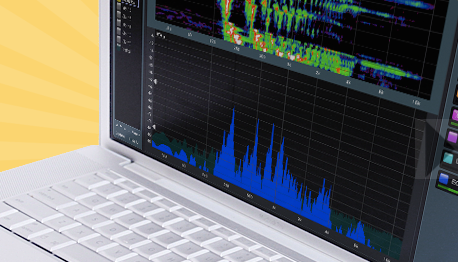
Vector averaging will always give us an objective measurement, even under hostile circumstances, provided we use enough averages. Under stable conditions (no redecorating the venue with a wrecking ball or moving loudspeakers), it will reveal at one point in space (where the measurement microphone lives), if, and to what degree, the sound system has become compromised due to loudspeaker-to-room and loudspeaker-to-loudspeaker interaction – and it’s quite immune to change, unlike RMS averaging.
However, when coherence drops below 50 percent, non-coherent power dominates over coherent power, any EQ decisions based on RMS-averaged transfer functions should be postponed until one is convinced of the “flavor” of non-coherent power. Is it noise (including the audience), or late-arriving reverberant energy outside the analysis windows, or a combination of both? Because any EQ decisions based on the appearance of low-coherent RMS-averaged transfer functions whose shape is determined by dominating non-coherent power (bottom plot in Figure 8) – and not signal – should be made with utmost caution!
Noise can be ruled out by first capturing a line spectrum of the noise floor prior to turning on the excitation signal (generator). Once the noise floor has been captured, we can turn on the generator and capture another line spectrum. If the latter lives 10 dB or more above the former, it should be good. This could still leave local SNR-minima at certain frequencies where the direct sound has been killed due to destructive interaction, which is something that vector-averaged transfer functions and coherence reveal.
Evidently this option is no longer available come show time, and you’ll have to make a judgement call about the signal-to-audience ratio before considering changing any EQ – that is, if you’re still convinced that audience sounds can “un-equalize” a sound system. (I’m kidding.)
If actual noise has successfully been ruled out for low-coherent RMS-averaged data, the remaining culprit is most likely late-arriving detrimental reverberant energy, which implies that we’re facing a negative direct-to-reverberant ratio (D/R) that EQ can’t fix. This is because EQ doesn’t alter the directional behavior of a loudspeaker or sound system, nor does it add absorption to the venue, nor does it close the distance between audience and sound system. The remaining options speak for themselves.
While first arrivals are always anechoic, indoors, reverberation is destined to catch up and stable (early) first order reflections are likely to add gain (room gain) that greatly affect the listening experience. This kind of useful reverberation is admitted for both RMS- and vector-averaged transfer functions, but in addition, the latter averaging type rejects detrimental reverberation, which requires a different remedy.
In Closing
This discussion is not meant to be an exercise in better or worse. That said, RMS-averaged transfer functions are very prone to circumstances and there are many rules of engagement for interpreting the data, whereas vector-averaged transfer functions are much more resilient. When used together, side by side, both averaging types make for a very complete picture.
But even more important is a proper understanding of coherence, because it will inform us whether we’re measuring the sound system or the audience. Regardless, high-coherent data is reliable, actionable data.
